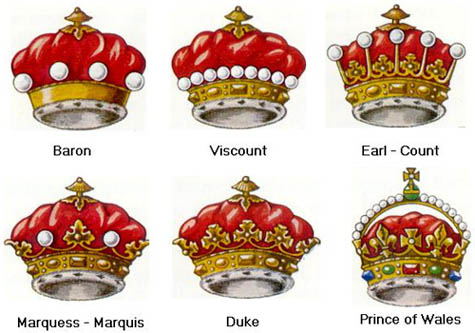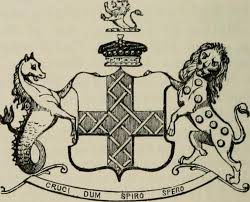Unraveling The Mystery: What Exactly Is A Viscount In British Royalty?
The world of British royalty and nobility can often seem like a labyrinth of ancient titles, intricate hierarchies, and centuries-old traditions. From Dukes to Barons, each rank carries its own unique history and significance. Among these esteemed positions, one title that often piques curiosity but remains somewhat elusive to the general public is that of a Viscount. What exactly is a Viscount, and where do they fit into the grand tapestry of British aristocracy?
In this article, we'll delve deep into the world of Viscounts, exploring their origins, their place in the British peerage, their historical roles, and their relevance in modern times. Prepare to unravel the mystery behind this fascinating noble rank.
The Basics of a Viscount: Definition and Origin
At its core, a Viscount is a noble title used in certain European countries, signifying a person of varying status within the aristocracy. When referring to a male title holder, the term is "Viscount" (pronounced VY-kownt). For a female title holder, or the wife of a Viscount, the title is "Viscountess" (pronounced VY-kownt-iss).
What Does "Viscount" Mean?
The term "Viscount" itself offers a significant clue to its historical function. It was derived from the Latin word "vicecomes" or "vice-count." This literally translates to "vice-count" or "deputy count." This etymology immediately suggests a role of assistance or oversight, indicating that a Viscount traditionally served as a deputy or assistant to a Count or an Earl (the English equivalent of a Count).
Historical Origins and Creation in England
While the concept of a "vice-count" existed in various forms across Europe earlier, the title of Viscount as a formal rank in the British peerage was relatively late to be established. It was first officially recorded and created in England in 1440. This significant event occurred during the reign of King Henry VI, who was King of both England and France at the time. In an act of consolidating titles from the two countries, Henry VI elevated John, Lord Beaumont, to the dignity of Viscount Beaumont, marking the official inception of the title within the English peerage system.
The oldest existing Viscountcy title in the British peerage today is that of Viscount Hereford, which was created in 1550. This demonstrates the enduring nature of these titles, with some having been passed down through generations for nearly five centuries.
The Viscount's Place in the British Peerage Hierarchy
To truly understand a Viscount, it's essential to grasp their position within the intricate structure of the British peerage. The British peerage system is a rigid hierarchy of noble titles, each with its own precedence. All individuals holding titles such as Duke/Duchess, Marquess/Marchioness, Earl/Countess, Viscount/Viscountess, and Baron/Baroness are part of this esteemed system.
The hierarchy of the British peerage, from highest to lowest in terms of rank, is as follows:
- Duke/Duchess: The highest rank in the peerage, often held by members of the royal family or historically powerful noble families.
- Marquess/Marchioness: A rank directly below a Duke, often historically associated with guarding border territories.
- Earl/Countess: The third highest rank, equivalent to a Count in continental Europe. Historically, they governed large counties.
- Viscount/Viscountess: This is where our focus lies. A Viscount is the fourth most significant rank in the British peerage hierarchy. They are directly below an Earl and directly above a Baron.
- Baron/Baroness: The lowest level of the aristocracy, historically governing the smallest manors or acting as direct tenants of the Crown.
Therefore, a Viscount occupies a distinct middle ground within this system, ranking above the most numerous Barons but below the more senior Earls, Marquesses, and Dukes.
Traditional Roles and Responsibilities
As the "vice-count," Viscounts traditionally held significant administrative and governance roles, albeit often subordinate to an Earl. Their duties could include:
- Deputies to Earls: They would serve as assistants or representatives to an Earl, particularly in managing the affairs of a large earldom or county.
- Overseeing Governance: A Viscount might be tasked with overseeing specific aspects of an earldom or county's governance, ensuring smooth administration and adherence to laws.
- Controlling Smaller Territories: In some cases, a Viscount might have controlled a smaller part of an earldom or a specific region, acting as a local administrator on behalf of the Crown or a higher-ranking noble.
- Local Administrators: Beyond deputizing for Earls, Viscounts often functioned as crucial local administrators, maintaining order, collecting taxes, and upholding justice within their designated areas.
While not governing the smallest manors (a role more typically associated with Barons), Viscounts certainly played a vital part in the decentralized governance of medieval and early modern England, bridging the gap between powerful regional magnates and the local populace.
Viscounts in the Modern Era
The role of a Viscount, like that of other peerage titles, has evolved significantly over centuries. While their historical administrative duties have largely been absorbed by modern governmental structures, the title itself continues to exist and is highly respected within British society.
Numbers and Prominent Examples
Recent statistics reveal the existence of approximately 270 Viscountcies across the British peerage system. These titles are primarily inherited, typically passing down through the male line. However, it's also a title that can be created and bestowed by the reigning monarch, although new hereditary peerages are rare today.
A notable contemporary example is James, Viscount Severn. He is the son of Prince Edward, Duke of Edinburgh (the youngest son of Queen Elizabeth II). As the child of an Earl (Prince Edward was created Earl of Wessex upon his marriage), James holds the courtesy title of Viscount Severn, which ranks him above a Baron and below an Earl, perfectly illustrating the traditional hierarchy in practice.
The Enduring Legacy
Today, holding the title of Viscount or Viscountess primarily signifies a connection to a long and distinguished lineage, often with a history of service to the Crown or significant contributions to the nation. While they no longer oversee counties or act as judicial deputies, Viscounts remain an integral part of the British aristocracy, participating in ceremonial events, maintaining historic estates, and contributing to various charitable and cultural endeavors.
Their presence in the House of Lords, though diminished for hereditary peers since reforms in 1999, still represents a link to a bygone era of governance and influence. The title serves as a living testament to the historical evolution of British society and its enduring fascination with tradition and heritage.
Conclusion
In summary, a Viscount is the fourth most significant rank within the British peerage hierarchy, positioned directly below an Earl and above a Baron. The title, derived from "vice-count," was formally established in England in 1440 by King Henry VI. Historically, Viscounts served as deputies to Earls or as crucial local administrators, overseeing aspects of governance or controlling smaller territories. While their administrative roles have faded, the title continues to be a respected mark of nobility, primarily inherited, with approximately 270 Viscountcies existing today. They represent a fascinating blend of historical significance and modern-day prestige, embodying a unique segment of British royalty and aristocracy.

What are Royal British Nobility Titles in order? What is the rank?

A Viscount, History of Viscounts, British Peerage System, Duke

Pin by Peggy Gilchrist on Australia - Our British Royals | Royal family